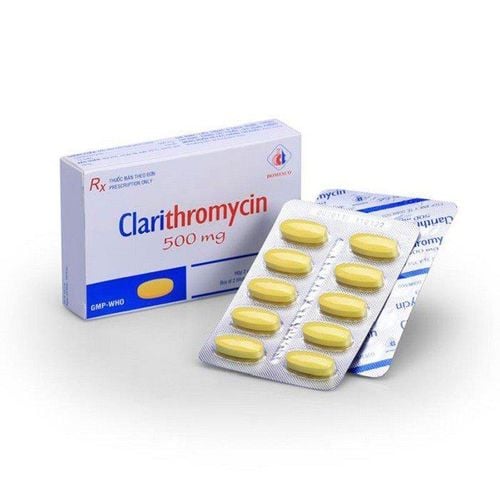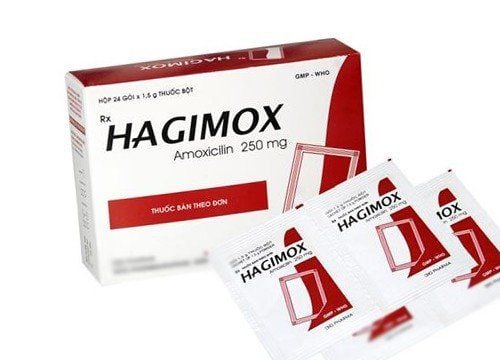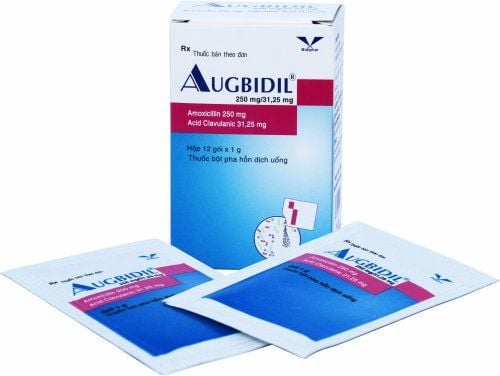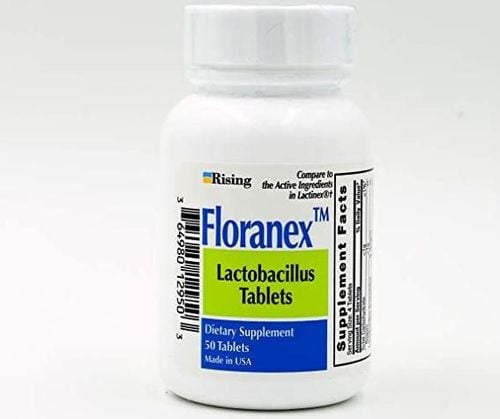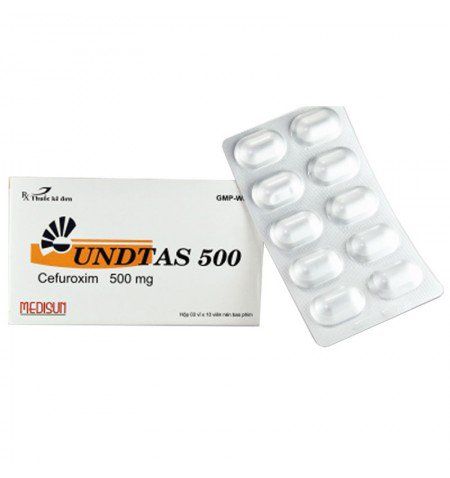This is an automatically translated article.
Santorix 1500 is prepared in the form of a powder for injection, indicated by doctors for use in respiratory tract infections, urinary tract infections, skin infections, and bacteremia. To ensure effective use when using Santorix 1500, users need to follow the instructions of the doctor.1. What are the uses of Santorix 1500?
1.1. What is Santorix 1500?
Santorix 1500 is an over-the-counter (ETC) drug that is indicated for the treatment of infections determined to be caused by susceptible organisms.The drug has the main ingredient Cefuroxim 1500mg and is prepared as a powder for injection.
1.2. What is Santorix 1500 used for?
Santorix 1500 is indicated for the treatment of:Lower respiratory tract infections, including pneumonia caused by Streptococcus pneumoniae, Haemophilus influenzae (including ampicillin-resistant strains), Klebsiella spp., Staphylococcus aureus (including strains that are resistant to ampicillin), Klebsiella spp. secrete and not secrete penicillinase), Streptococcus pyogenes, and Escherichia coli. Urinary tract infections caused by Escherichia coli and Klebsiella spp. Skin and soft tissue infections caused by Staphylococcus aureus (both penicillinase-producing and non-penicillinase-producing strains), Streptococcus pyogenes, Escherichia coli, Klebsiella spp., and Enterobacter spp. Sepsis caused by Staphylococcus aureus (both penicillinase-producing and non-penicillinase-producing strains), Streptococcus pneumoniae, Escherichia coli, Haemophilus influenzae (including ampicillin-resistant strains), and K/ebsiela spp. Cephalosporins are generally not effective against methicillin-resistant Staphylococcus aureus.
2. Usage of Santorix 1500
2.1. How to take Santorix 1500
The drug is indicated for parenteral use.2.2. Dosage of the drug Santorix 1500
The usual adult daily dose for cefuroxime injection is 750mg - 1.5 every 8 hours, usually for 5 - 10 days. In uncomplicated urinary tract infections, skin and skin structure infections, infectious gonorrhea and complicated pneumonia, a dose of 750 mg every 8 hours is recommended. In severe or complicated infections, a dose of 1.5g is given every 8 hours. In Bone and Joint Infections: Use 1.5g every 8 hours In severe life-threatening infections or infections caused by less susceptible organisms, a dose of 1.5g every 6 hours may be required. . In bacterial meningitis, the dose should not exceed 38 every 8 hours. Prophylaxis in surgery: 1.5g intravenously before starting surgery 0.5 - 1 hour. Thereafter, 750 mg IV every 8 hours was administered for the duration of surgery. Prophylaxis in cardiac surgery: 1.5g intravenously at the time of anesthesia or anaesthesia and every 12 hours thereafter for a total dose of 6g.2.3. Handling missed dose
Information on how to handle a missed dose of Santorix-1500 is being updated.2.4. Treatment in case of overdose
Acute Overdose: Most drugs cause only nausea, vomiting, and diarrhea. However, may cause neuromuscular hyperexcitability and convulsions, especially in patients with renal failure.Overdose management: When a patient overdoses on Santorix 1500, it is necessary to protect the patient's respiratory tract, support ventilation and infusion. If convulsions are detected, immediately stop using the drug; Anticonvulsant therapy may be used if clinically indicated. Hemodialysis can remove drugs from the blood, but most treatment is supportive or symptomatic.
3. Note when using Santorix 1500
Before initiating treatment with cefuroxime, a thorough investigation of the patient's history of allergy to cephalosporins, penicillins or other drugs should be made. The drug should be used with caution in patients sensitive to penicillin, patients with atopic allergies, especially drug allergies If there is an allergic reaction to cefuroxime injection, the drug should be discontinued. Severe acute hypersensitivity reactions may require epinephrine and other emergency measures. Although cefuroxime rarely causes changes in renal function, careful monitoring is recommended during treatment with cefuroxime, especially in critically ill patients receiving maximum doses. Caution should be exercised when administering to patients concomitantly with potent diuretics, because of possible adverse effects on renal function. The dose of cefuroxime should be reduced in patients with temporary or chronic renal impairment, since in these patients serum antibiotic concentrations may also be high and persistent.3.1. Use of the drug Santorix-1500 in pregnant and lactating women
Pregnancy: Studies in mice and rats have revealed no evidence of impaired fertility or harm to the fetus due to cefuroxime. Using this antibiotic to treat nephritis - pyelonephritis in pregnant women did not appear unwanted effects in the newborn after exposure to the drug in the mother's womb. Cephalosporins are generally considered safe to use during pregnancy. However, studies in pregnant women are incomplete. Since animal studies are not always predictive of human response, this drug should be used in pregnancy only if clearly needed. Lactation: Cefuroxime is excreted in human milk at low concentrations. This concentration has no effect on the nursing infant, but if the baby has diarrhea, thrush and rash, it should be watched.3.2. Effects of Santorix-1500 on the ability to drive and use machines
The effects on the ability to drive and use machines of cefuroxime are not known.4. Side effects of Santorix 1500
Common: Systemic: Local burning pain and thrombophlebitis at the injection site. Digestion: Diarrhea. Skin: Skin rash. Uncommon: Systemic: Anaphylactic reactions, Candida infections. Blood: Eosinophilia, leukopenia, neutropenia, positive Coombs test. Gastrointestinal: Nausea, vomiting. Skin: Urticaria, itching. Urogenital - Genitourinary: Increased serum creatinine. Rare: Body as a whole: Fever. Blood: Hemolytic anemia. Gastrointestinal: Pseudomembranous colitis. Skin: Erythema multiforme, Stevens-Johnson syndrome, toxic epidermal necrolysis. Liver: Cholestatic jaundice, slight increase in AST, ALT. Kidney: Nephrotoxicity with temporary increase in blood urea, serum creatinine, interstitial nephritis. Central nervous system: Convulsions (if high dose and renal failure), headache, agitation. Inform your doctor about any unwanted effects you may experience while using the drug.5. Santorix 1500 drug interactions
Increased effect Probenecid at high doses reduces renal clearance of cefuroxime, resulting in higher and more prolonged plasma concentrations of cefuroxime. Increased toxicity: Aminoglycosides increase the possibility of nephrotoxicity6. How to store Santorix 1500
Santorix-1500 should be stored at 30°C, protected from moisture and light. The shelf life of the drug is 36 months from the date of manufacture.Please dial HOTLINE for more information or register for an appointment HERE. Download MyVinmec app to make appointments faster and to manage your bookings easily.




